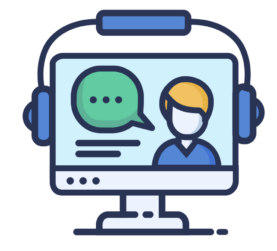This post first appeared on Edudemic.
There is a new digital divide on the horizon. It is not based around who has devices and who does not, but instead the new digital divide will be based around students who know how to effectively find and curate information and those who do not. Helene Blowers has come up with seven ideas about the new digital divide – four of them, the ones I felt related to searching, are listed below.
The New Digital Divide
In an age of information abundance learning to effectively search is one of the most important skills most teachers are NOT teaching. They assume students know how to conduct a search, and set them free on the internet to find information. They assume that students have the skills to critically think their way through the searching and the web. Sadly, this is not the case and everyday we are losing the information literacy battle because we often forget to teach these crucial searching skills in our schools.
Teachers – especially in the elementary grades -need to develop a shared vocabulary around the skill of searching. They need to make sure their students learn some basic search strategies and keep applying them until they become almost automatic.
Critical Search Skills Students Should Know
Quotation Marks
Students should always use quotes to search for an exact word or set of words. This is useful when you want something like quotes, song lyrics or text from a an exact historical time period.
- Example: “The Great Chicago Fire”
Dashes (or minus sign)
Use this symbol directly before a word to help exclude unwanted information from your search
- Example: Great Chicago Fire -soccer
Two Periods
Use this to help you find information between those two numbers. For example you might want to try:
- Example: Great Chicago Fire October 8..10
Site Search
For a look through the Chicago HIstory Museum site only
- Examples: Great Chicago Fire site:chicagohs.org or site:Chicagotribune.com
Country Codes
Students should gather every side and view possible on current events, and historical news stories. Not just those that are seen through the red, white and blue colored lenses of our media. To do this all they need is to search using different country codes. For example, if you wanted to get to Google Korea all you would have to do is search using the country code of Kr for Korea.
Try it yourself first by going to Google Korea – www.google.co.kr.
Below are a few of the country codes.You can find the complete list here.
The Filter Bubbles
Did you know that while you are searching, you are inside of an invisible bubble? The results you get when you search are coming to you through filters. These filters determine, based on your past searching history, what results you would most likely want – often leaving out opposing viewpoints. Basically, what comes back to you in your search results depends on your past searches, likes and location. The scary part is that what gets filtered out of your search results is not decided by you but by the algorithms of the companies that are providing you with the results.
Two different people can get two very different search result pages. Author Eli Pariser explains this concept in his short TED Talk (link to talk below). Teaching students about the filter bubbles is crucial for helping them understand the hidden power behind search results.
Due to the hidden power of filter bubbles, it is helpful to teach students how to search in the Chrome browsers incognito mode by going to File –>New Incognito Window. This way you don’t reveal who you are to search engines and they can’t filter your results. To learn more watch this very inforamtive TED Talk by Eli Pariser.
Eli Pariser ‘s TED Talk On Filter Bubbles
Finding Primary Sources
Today, finding primary sources can be quite easy. However, it can be a serious way for students to better understand history, by hearing from the people who witnessed the event and other real life accounts. Primary sources have always had strong educational value and now they are at our fingertips. Teachers should be using these more than ever to teach history and other subjects where reading first person accounts of real events can help fuel true empathetic understanding,
Below is a great one minute video on how to use google news to easily find primary sources.


